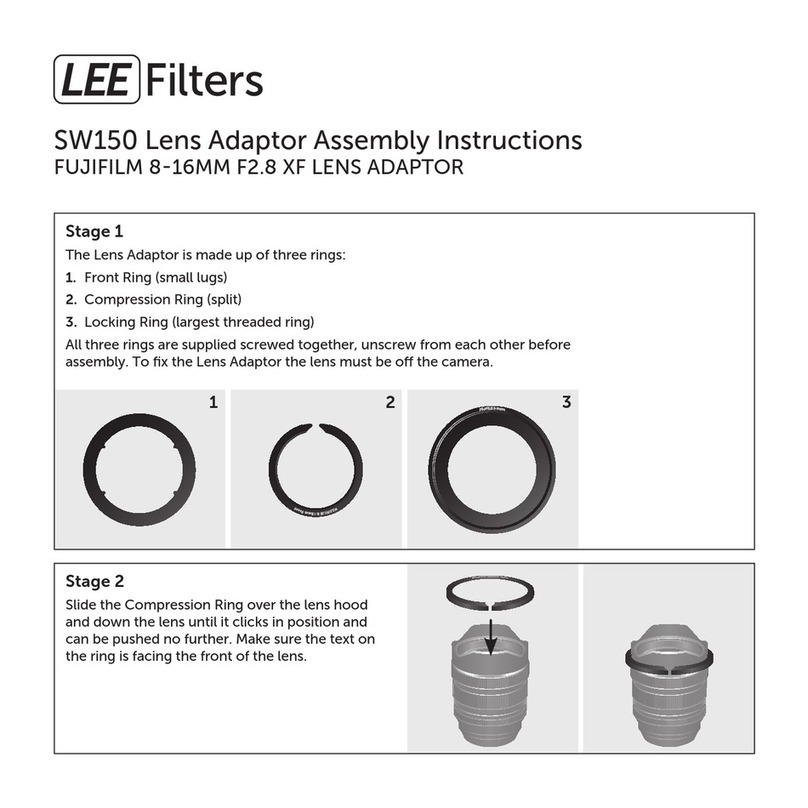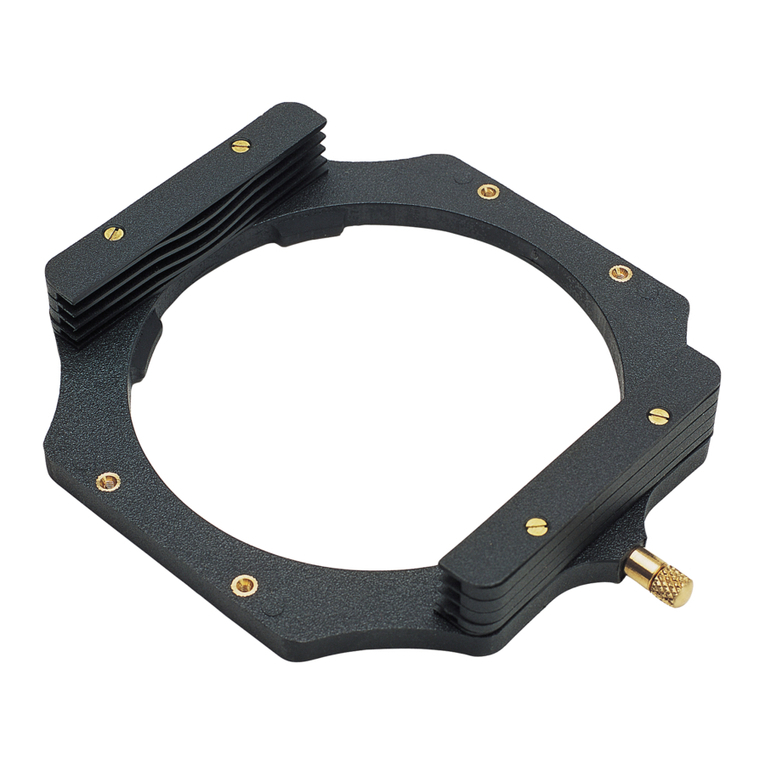
Composing the Image
Set up the camera on a tripod and
compose the image as normal
WITHOUT the filter. Switch your
camera from autofocus (AF) to
manual focus (M).
Exposure
Calculating the exposure is simple.
Take a meter reading as normal
WITHOUT the filter in place, then
choose and set your aperture. Then,
taking the metered shutter speed,
refer to the table to find out your
new shutter speed with your chosen
ProGlass IRND filter in place.
Each ProGlass IRND filter comes
with a card featuring a chart that
shows the shutter speed adjustments
required when using the filters. You
can also download the LEE Filters
ProGlass IRND Exposure Guide app
(free of charge, available for both
Apple and Android), so that you
have all the necessary information
on your smartphone.
Be aware of changing light levels.
If you are shooting at dusk, light
levels will reduce over the period of
your exposure, so you will have to
increase your shutter speed further.
Conversely, if you are shooting at
dawn, light levels will increase
and you will want to reduce the
length of the exposure. You will
need to experiment!
Remember, your aperture stays
the same, it is the TIME part of the
exposure you want to change.
Shooting the Image
Once you have composed the image,
focused in the normal way and
metered, place the filter into the
holder. The filter must be placed in
the rear filter slot, closest to the
holder backplate, with the foam seal
facing the backplate (the two, three
and four-stop versions of the ProGlass
IRND filters do not have foam seals).
This prevents any light getting behind
the filter and causing flare.



























